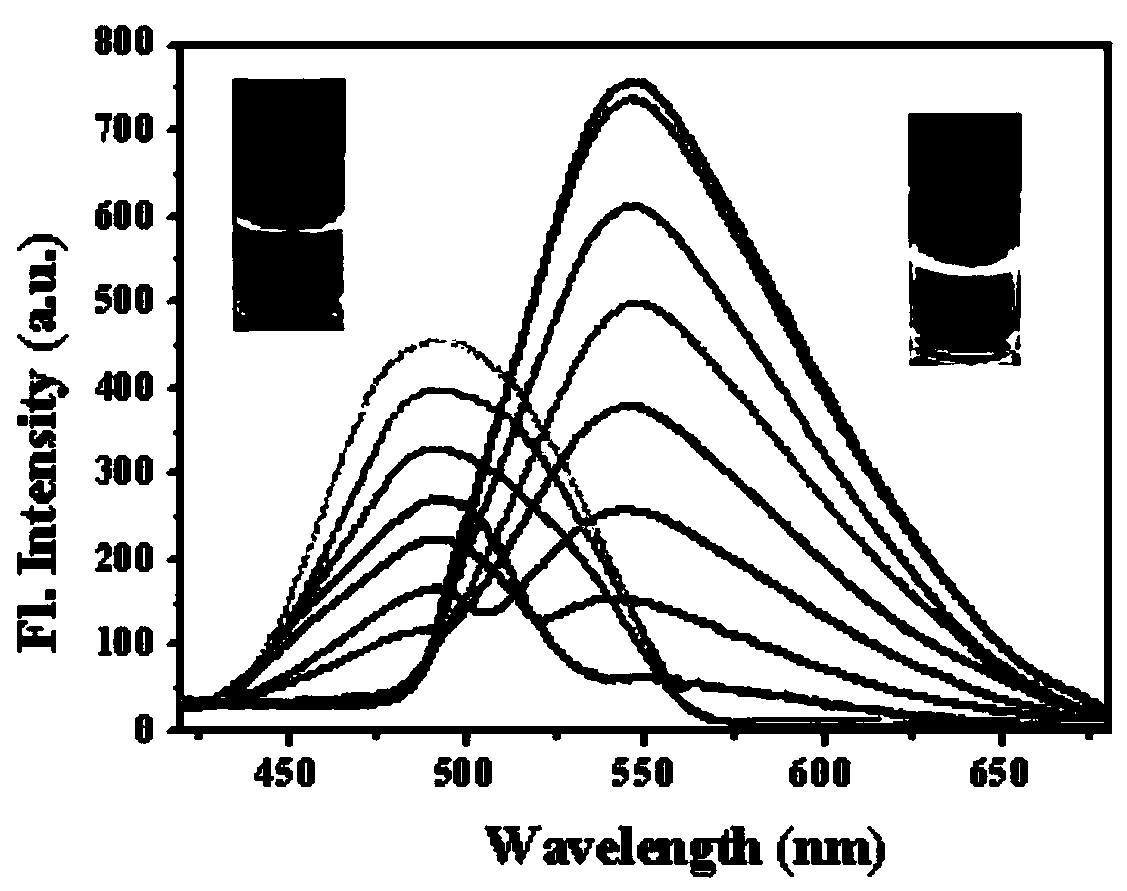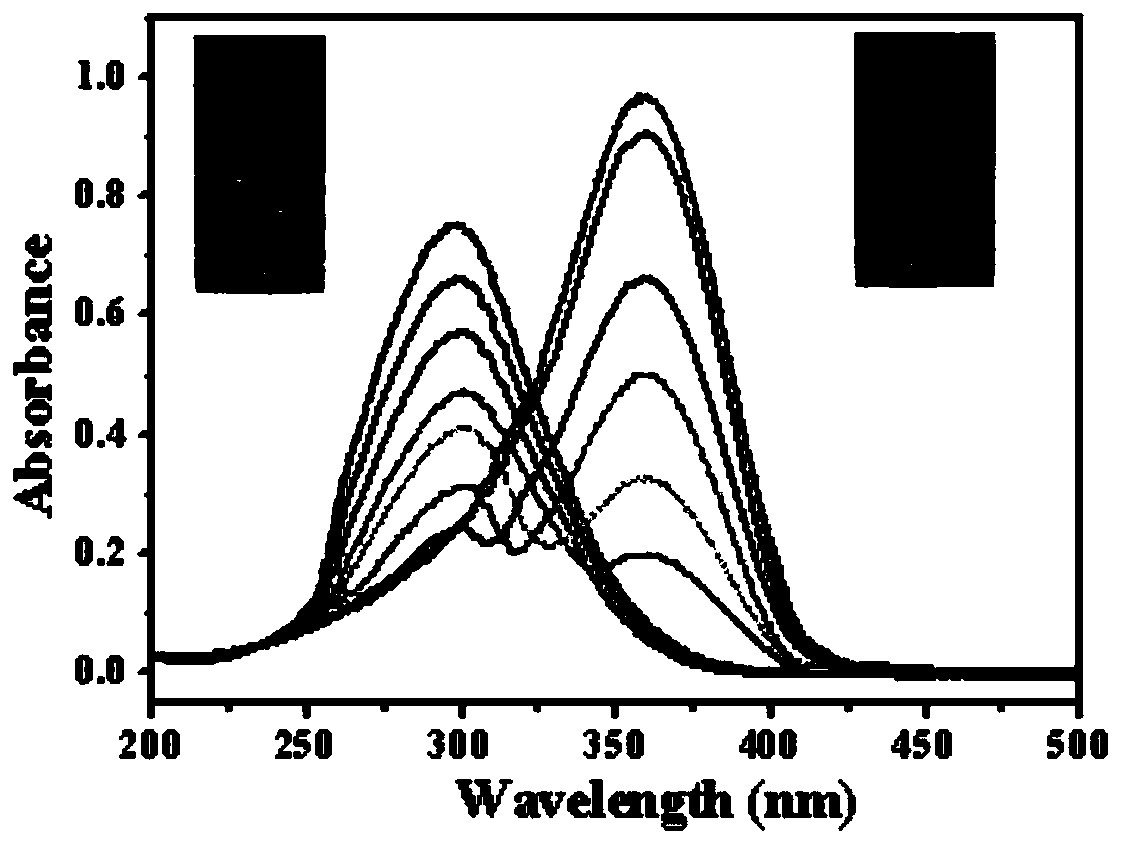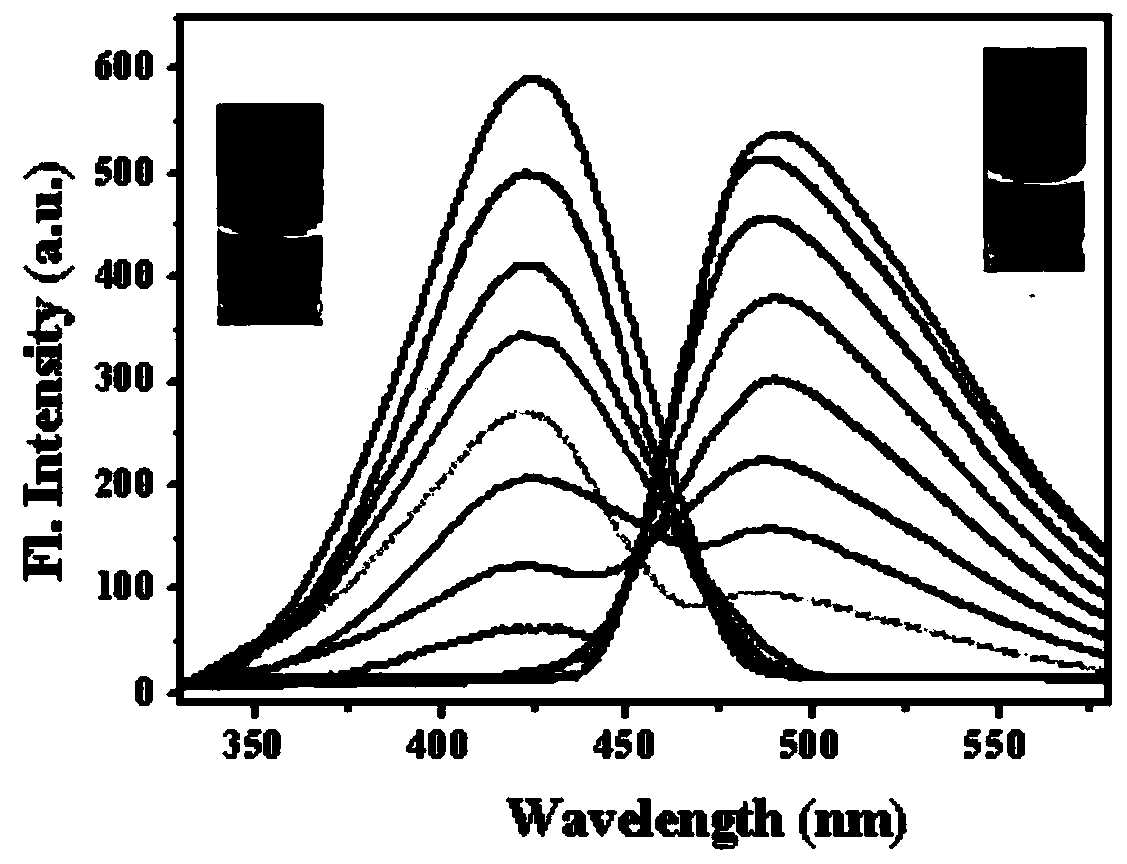Bifunctional fluorescent probe for detecting HSO3- and hydrazine hydrates and preparation method and application of probe
A technology of fluorescent probe and hydrazine hydrate, which is applied in the field of bifunctional fluorescent probe and its preparation, and can solve the problems such as few reports of bifunctional fluorescent probe
- Summary
- Abstract
- Description
- Claims
- Application Information
AI Technical Summary
Problems solved by technology
Method used
Image
Examples
Embodiment 1
[0031] The preparation method of 3-(4″-((2-cyano)ethylacrylate)-1′,1″-biphenyl-4′-carbonyl)nopineone fluoroboron complex, the reaction formula:
[0032]
[0033] Specific steps are as follows:
[0034] 1, the preparation of 3-(4'-bromobenzoyl) nopinone:
[0035] Add 0.06 mol of sodium hydride into a three-neck flask equipped with a stirrer, thermometer and reflux condenser, add 8 mL of ethylene glycol dimethyl ether under nitrogen protection, and dissolve 0.02 mol of nopinone in 9 mL of ethylene glycol dimethyl ether Slowly add into the flask, heat to reflux for 0.5h, then slowly add 0.024mol methyl 4-bromobenzoate dissolved in 9mL of ethylene glycol dimethyl ether into the flask for reflux reaction for 7-8h, track the reaction progress with thin-layer chromatography. After the reaction, the reaction solution was cooled in an ice bath, slowly added 15 mL of distilled water to hydrolyze sodium hydride, extracted 3 times with 45 mL of ethyl acetate, the combined organic phas...
Embodiment 2
[0043] Dissolve 3-(4″-((2-cyano)ethylacrylate)-1′,1″-biphenyl-4′-carbonyl)nopineone fluoroboron complex in PBS buffer (pH= 7.2, 10mM, 7 / 3 (v / v) ethanol / water), prepared to a concentration of 1.0×10 -6 For the solution of M, hydrazine hydrate was also dissolved in PBS buffer solution to form a concentration of 0, 1, 2, 4, 6, 8, 10, 20, 40, 60, 80, 100, 200×10 -7 M's solution. Measure the effect of different concentrations of hydrazine hydrate on 3-(4″-((2-cyano) ethyl acrylate group)-1′,1″-biphenyl-4′-carbonyl) nopinone fluoroboron complex Fluorescence spectra, such as figure 1 shown. The results show that the fluorescence intensity of the compound around 490nm is obviously weakened, and the fluorescence intensity around 550nm is obviously enhanced. It shows that 3-(4″-((2-cyano)ethylacrylate)-1′,1″-biphenyl-4′-carbonyl)nopineone fluoroboron complex can be used as a fluorescent ratiometric probe Hydrazine hydrate was tested.
Embodiment 3
[0045] Dissolve 3-(4″-((2-cyano)ethylacrylate)-1′,1″-biphenyl-4′-carbonyl)nopineone fluoroboron complex in PBS buffer (pH= 7.2, 10mM, 7 / 3 (v / v) ethanol / water), prepared to a concentration of 1.0×10 -6 For the solution of M, hydrazine hydrate was also dissolved in PBS buffer solution to form a concentration of 0, 1, 2, 4, 6, 8, 10, 20, 40, 60, 80, 100, 200×10 -7M's solution. Measure the effect of different concentrations of hydrazine hydrate on 3-(4″-((2-cyano) ethyl acrylate group)-1′,1″-biphenyl-4′-carbonyl) nopinone fluoroboron complex UV absorption spectrum, such as figure 2 shown. The results show that the ultraviolet absorption intensity of the compound around 360nm is obviously weakened, and the ultraviolet absorption intensity around 280nm is obviously enhanced. It shows that 3-(4″-((2-cyano)ethylacrylate)-1′,1″-biphenyl-4′-carbonyl)nopineone fluoroboron complex can be used as a color ratio probe Hydrazine hydrate was tested.
PUM
 Login to View More
Login to View More Abstract
Description
Claims
Application Information
 Login to View More
Login to View More - R&D
- Intellectual Property
- Life Sciences
- Materials
- Tech Scout
- Unparalleled Data Quality
- Higher Quality Content
- 60% Fewer Hallucinations
Browse by: Latest US Patents, China's latest patents, Technical Efficacy Thesaurus, Application Domain, Technology Topic, Popular Technical Reports.
© 2025 PatSnap. All rights reserved.Legal|Privacy policy|Modern Slavery Act Transparency Statement|Sitemap|About US| Contact US: help@patsnap.com



